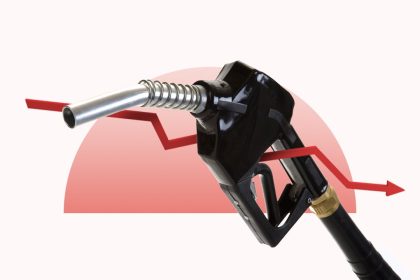If you are a driver in the Empire State, New York gap insurance is an optional type of car coverage that may save you money if your car is totaled or stolen and not recovered. If that happens to you and you have a car loan, the amount you receive from your insurer might not cover the full amount of your loan. Gap insurance exists so that doesn’t happen. It pays off the difference between what you owe on the vehicle and what you received from your insurer. We did the research on gap insurance in NY to help you understand when this type of coverage could be worth the cost.
What is gap insurance?
Gap insurance, or guaranteed asset protection insurance, is a type of auto insurance coverage. It covers the difference between what you owe on your auto loan and the actual cash value (ACV) of the car if there is an accident where the car is deemed a total loss. Typically, insurance will only reimburse you the ACV of your vehicle minus your deductible. If that amount is less than what you owe on the loan, you would normally be left to cover the remainder of your auto loan on your own. With gap insurance, you have coverage for the entire amount, even if the ACV is less than your remaining loan balance.
How does gap insurance work in New York?
You can only purchase New York gap insurance if:
It’s not uncommon for new car buyers to assume that having a loan or lease on a vehicle is the only prerequisite to obtaining gap coverage. However, the car must also meet other criteria as well.
It’s important to note that NY law prohibits lenders from requiring gap insurance as a condition of the loan. In other words, you cannot be denied a loan if you do not wish to have gap coverage. However, purchasing this coverage may save you considerably if your car is totaled or stolen, so it is worth considering.
Another misconception is that gap coverage is the same as new car replacement. This is not true, either. Gap coverage only pays the difference between a car’s depreciated value (or ACV) and your remaining loan amount; it will not give you the funds needed for a new purchase.
That’s not to say that gap insurance cannot still be useful. By not having as much debt to your name, you will be more likely to be approved for a new loan.
When do you use gap insurance?
Gap insurance in New York only activates if the car is deemed a total loss and undrivable. This means that for minor bumps and scrapes, gap insurance doesn’t come into play. The vehicle must either be stolen or totaled for gap insurance to pay your remaining loan amount.
Gap insurance comes into play if you have negative equity in your loan after you receive the insurance payout. Vehicles start depreciating the minute they leave the dealer’s lot, so your car may be worth considerably less as time passes. This happens because of general wear and tear, as well as the market demand for your model. Subsequent redesigns may also make your car less desirable—and therefore less valuable. On average, cars lose about 10 to 15 percent of their value per year, with depreciation rates being higher near the beginning of the vehicle’s lifespan.
Because of these factors, you may end up owing more on your vehicle than its actual cash value. The ACV of your car is determined by taking the depreciation into account, unlike the replacement value of a vehicle, which, as the name suggests, is the amount it would cost to replace it with a comparable model. Insurers use the ACV rather than the replacement value to determine your payout after an accident or theft.
Negative equity happens when the ACV of your car—which is the amount you are likely to receive as your insurance payout—is less than the amount you owe on your loan. If that happens, you will be required to pay the difference out-of-pocket to close out the loan if your car is totaled or stolen.
Gap insurance is most easily understood with some examples. Below is an example when gap insurance would apply, and one where it would not:
Gap insurance after a non-accident mishap
You financed a $25,000 car one month ago. After a severe storm, you awake to find that a tree has fallen over and crushed your vehicle. Because it is damaged beyond repair, an insurance adjuster considers it a total loss. Your comprehensive coverage plan provides you with a payout of $20,000 (minus any deductible), which means you still owe approximately $5,000. In this situation, gap insurance would pay the $5,000 difference.
When gap insurance won’t cover an accident
You recently financed the purchase of a $25,000 car. Because you didn’t pay for the vehicle outright, your lender required you to purchase both full coverage and gap coverage. After parking on the side of the street, an oncoming car knocks off a side mirror and scrapes the door up a bit. You contact your insurance company, which informs you that you are covered because you have collision coverage. However, you decide you want more than the repair amount and instead, seek the full $25,000 to start anew. Gap insurance would not kick in in this scenario because the car is still driveable.
Gap insurance vs. other coverage types
With so many types of coverage available, gap insurance can feel similar to other insurance types in that it activates after a covered peril takes place. It is unique, however, in that it requires both comprehensive and collision coverage to be purchased before it can take effect. Gap insurance also does not pay for any repairs; it only usually kicks in if the car is totaled or stolen.
The table below explains how gap insurance compares to both comprehensive and collision coverage:
| Gap insurance | Comprehensive | Collision | |
|---|---|---|---|
| What it covers | Financially protects you if your car is deemed a total loss after a covered peril. DOES NOT pay for repairs or replacement. Only pays for the difference between an ACV and the remaining loan amount. | Pays for repairs or replacement if your car is damaged outside of a collision or after hitting an animal, such as a deer. Incidents such as fires, falling tree limbs or flood waters are all covered under a comprehensive plan. DOES NOT pay for any discrepancy between an ACV payout and the remaining loan amount. | Pays for repairs or replacement after your car is damaged in a moving accident. Incidents such as hitting another vehicle or running into a tree or fence are covered under collision coverage. DOES NOT pay for any discrepancy between an ACV payout and the remaining loan amount. |
| Who offers it | Many insurance companies offer gap coverage, but they may call it loan/lease coverage instead. It is also possible to purchase it through an auto dealership. | Comprehensive coverage can be purchased with most insurance providers. | Collision coverage can be purchased with most insurance providers. |
Where to buy gap insurance in New York
Gap insurance is available from many, but not all, car insurance companies and can usually be added to an existing policy. In some cases, it may be purchased as a stand-alone option from the dealership or your lender. You may see it listed as loan/lease coverage by some companies.
If you purchase your gap insurance from the dealership or your lender, it may be added to the loan, thus incurring interest charges. Unless offered as a standalone option, meaning you just pay for it upfront, purchasing gap insurance through a dealership may not always be your best option. However, keep in mind that many factors may affect the cost of car insurance.
Gap insurance companies in New York
Although not all insurers offer gap coverage, many New York carriers do have this option available at a reasonable rate. If you are looking for gap insurance in NY, you may want to consider one of the following companies:
- Allstate: One of the largest insurers in the U.S., Allstate offers multiple discounts to help lower your rate and robust mobile and online tools for managing your policy online. Its deductible rewards program offers $100 off your collision deductible for every year of safe driving.
- Liberty Mutual: Liberty Mutual scored well above average in the 2024 J.D. Power Auto Claims Satisfaction Study, which suggests it offers excellent customer service. You can save up to 30 percent on car insurance by taking advantage of its RightTrack telematics program, according to the carrier.
- Nationwide: Nationwide offers affordable rates for many drivers and scores well with J.D. Power. Like Allstate, it has a vanishing deductible program, along with other coverage options, including a total loss deductible waiver.
- Progressive: Progressive earned a high 4.4 Bankrate Score in 2025, based on the company’s solid financial strength ratings, numerous discounts and customizable policy options. It offers some of the cheapest average rates for drivers who need high-risk insurance.
- Travelers: Travelers earned above-average marks in New York in J.D. Power’s 2025 U.S. Auto Insurance Study, which assesses overall customer satisfaction. The company’s IntelliDrive program offers savings of up to 30 percent according to its website, and it features several discounts that could benefit young drivers.
Frequently asked questions
Why we ask for feedback
Your feedback helps us improve our content and services. It takes less than a minute to
complete.
Your responses are anonymous and will only be used for improving our website.
Help us improve our content
Read the full article here
















